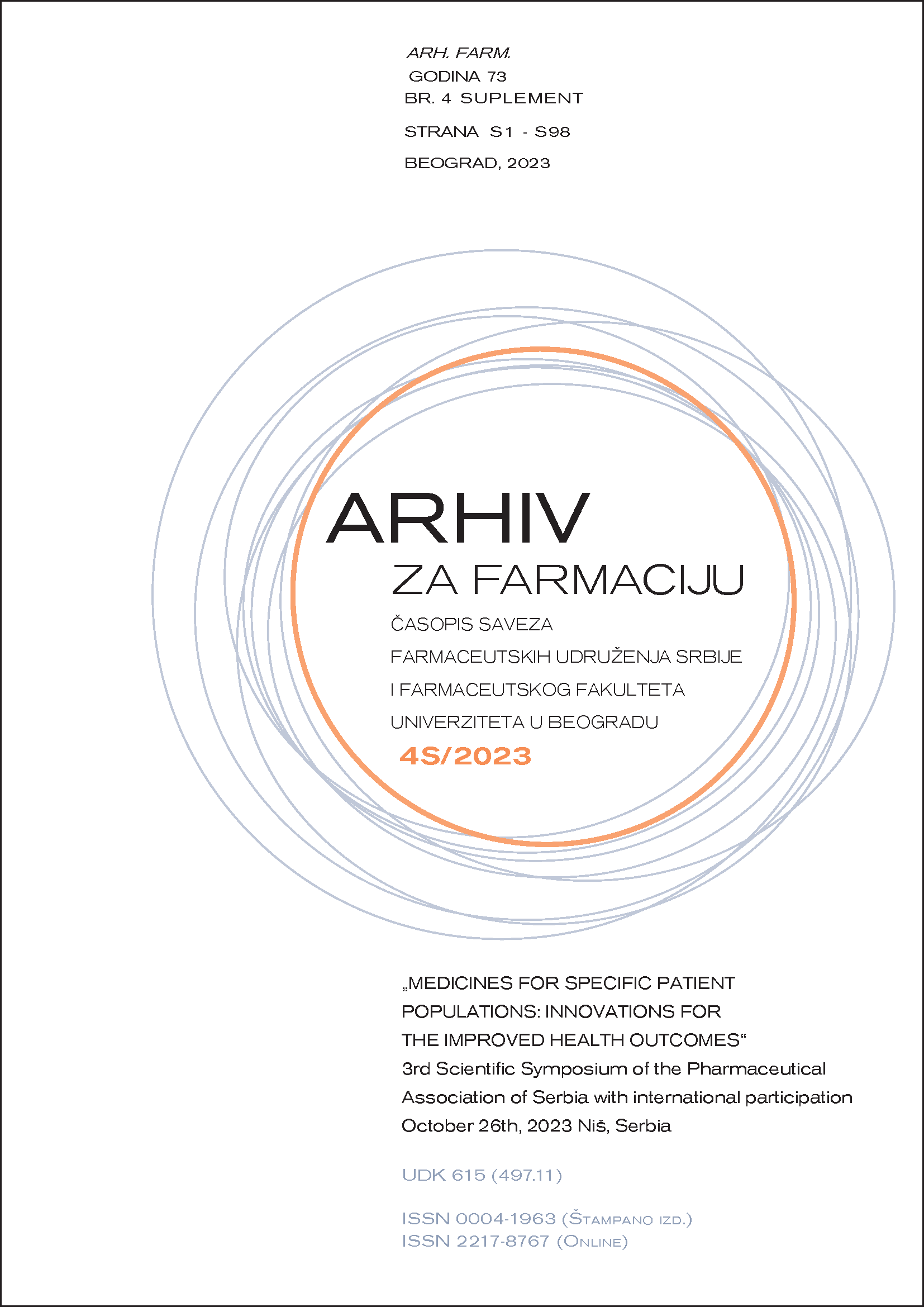THE FREQUENCY OF POTENTIAL DRUG-DRUG INTERACTIONS IN PATIENTS WITH RHEUMATOID ARTHRITIS: A COMPARISON OF FOUR SPECIALIZED DRUG INTERACTION DATABASES
Abstract
The high prevalence of comorbid conditions in patients with rheumatoid arthritis (RA) requires the simultaneous use of a large number of drugs, which consequently leads to an increased risk of interactions (1). Drug-drug interactions can lead to increased/decreased activity of the administered drugs, causing toxicity and/or therapeutic failure (2). The aim of the paper was to determine the difference between specialized databases for monitoring drug interactions with a focus on frequency and severity in patients with RA. The conducted study included 131 patients diagnosed with RA. After reviewing patient therapy, potential interactions were analyzing using the following databases: British National Formulary (BNF), DrugBank, RxList and DDinter. Patients were divided into two groups based on the presence and severity of the interaction. Comparing the databases, it is observed that the number of patients with potential interactions was the same in the BNF and DrugBank databases (65.65%), while DDinter and RxList identified a smaller number of potential interactions (63.36% and 48.09%, respectively). The results of the conducted research show in terms of the representation of severe interactions in the BNF and DDinter databases (73.78% and 71.24%), while DrugBank and RxList identified significantly fewer severe interactions (28.05% and 30.48%). A similar trend was noticed in moderate and mild interactions compared to severe ones. Based on the results, we conclude that information on the frequency and severity of interactions obtained from specialized databases is heterogeneous. For chronic diseases like RA, assessing drug-drug interactions is challenging, so using multiple sources for evaluation in clinical practice is advisable.
References
1. Gomides APM, Albuquerque CP, Santos ABV, Amorim RBC, Bértolo MB, Júnior PL, et al. High Levels of Polypharmacy in Rheumatoid Arthritis-A Challenge Not Covered by Current Management Recommendations: Data From a Large Real-Life Study. J Pharm Pract 2021; 34(3): 365-71.
2. Thanacoody HKR. Drug interactions. In: Walker R, Whittlesea C, editors. Clinical pharmacy and therapeutics. 5th ed. London: Elsevier; 2012.

